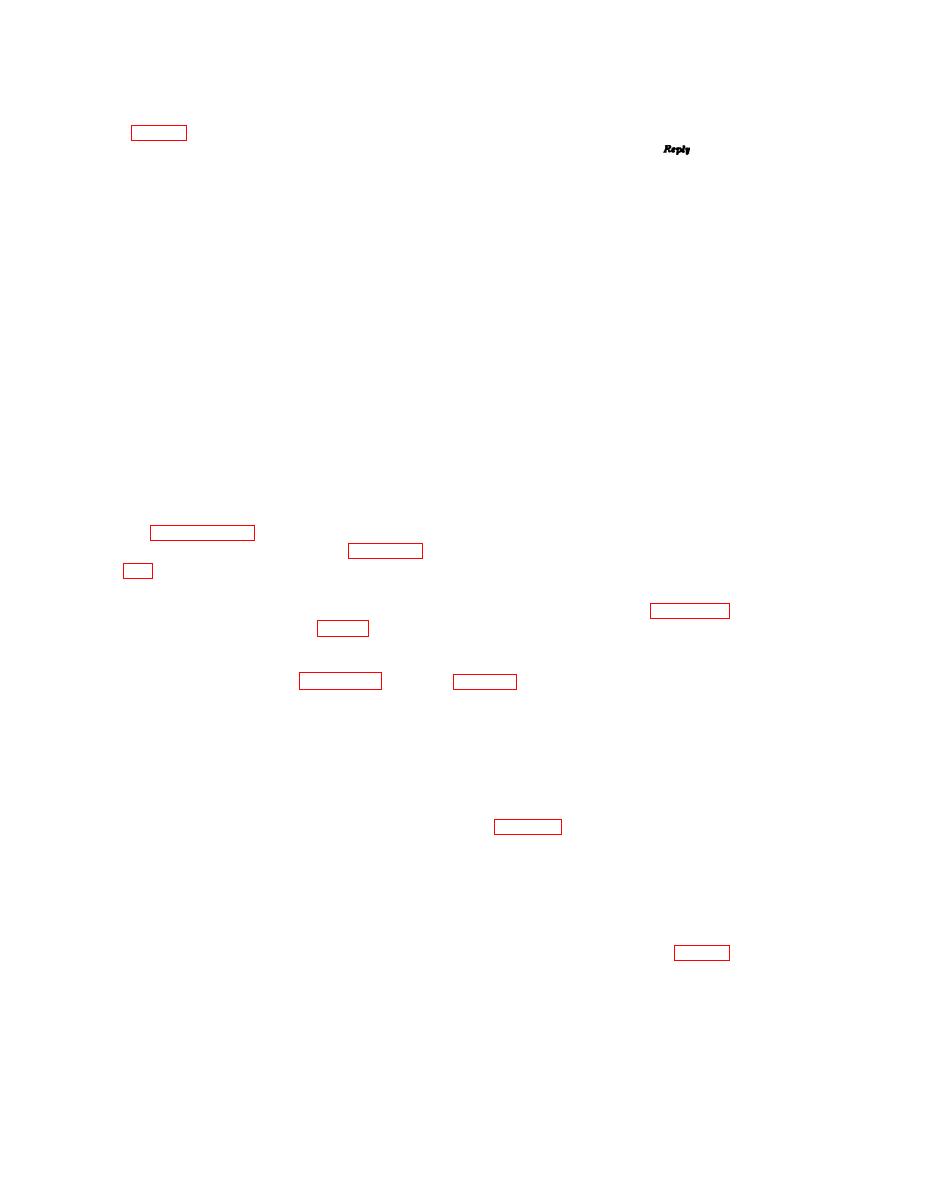 |
|||
|
|
|||
|
|
|||
| ||||||||||
|
|
 TM 11-6625-667-45/NAVAIR 16-30APM123-2/TO 33A1-3-367-22
prf periods, and provides the accept or reject
2-4. Receiver Section
readout o
Test
The receiver section evaluates the transponder set
System:
replies for proper frequency and power level. It
Mode 1------ Any combination of A1, A2, A4, B1,
consists of preselector A15Z1, detector A15Z2, a
and B2 plus framing pulses. Other
information pulse not present.
video amplifier, video switching and receiver gates,
Mode 2------ Any combination of all information
video shaper DSS1, mode 4 shaper DSS6, and an
pulses plus framing pulse.
emitter follower. The receiver frequency is 1,090
Mode 3/A---- Any combination of all information
mc 0.5, and the bandwidth at the 3-db points
pulses plus framing pulses.
of the selectivity curve is 6.5 mc 1. The receiver
Mode C------ Any combination of all information
sensitivity is adjustable between 15 and 0 dbm.
pulses, except for 500 feet incre-
ments (combinations of A1, A2,
It is normally preadjusted to 9 dbm 1 for test-
A4, B1, B2, B4, D2, D4, and I/P
ing transponder that have a minimum transmitter
are used) and 100 feat increments
power level of +48 dbm. The receiver sensitivity
(combinations of A1, A2, A4, B1,
can be preadjusted internally ( 15 to 0 dbm) to
B2, B4, C1, C2, C4, and D2 are
plus framing pulses.
used)
test minimum RF levels between +42 and +57
Identity:
dbm. Transponder replies that have the proper
Any combination of all information
Mode 2 and
frequency and RF levels are detected and will suf-
3/A.
pulses plus the I/P pulse and
ficiently drive the video amplifier. The video am-
framing pulse.
Mode 1------ Two trains of any combination of all
plifier output is gated to trigger video shaper
information pulses plus framing
DSS1 during all test except mode 4. During
pulses.
mode 4 tests the video is gated to external equip-
Emergency:
ment. The receiver video gates are enabled as de-
Mode 1 and 2- Any combination of all information
scribed in paragraph 2-5a by the decoder section,
pulses plus three sets of framing
pulses.
and receiver gate periods are described in para-
Mode 3/A---- A1, A2, A4, B1, B2, and B4 plus
graph 2-5c.
three sets of framing pulses.
2-5. Decoder Section
2-6 for the timing diagrams. The receiver gating
operation is started by the decode enable pulse
ates the transponder reply video for all tests ex-
cept mode 4. It detects the presence and position
produced by the last (P3) interrogation pulse
of each pulse in a reply train. Figure 2-2 illus-
trate the basic train, and the position of the
enable delay DSS4 is triggered by this pulse. In
identity pulse or a second F1 framing pulse. The
the reset state, DFF6 disables the receiver video
various types of replies expected in system tests,
gates. When triggered, DSS4 produces a 1.8-micro-
identity tests and emergency tests are listed in the
second positive pulse. The trailing edge of the
chart below. Since the test set, does not evaluate the
pulse sets DFF6, which in turn enables the receiver
mode 4 reply, its format is not illustrated. Framing
video gates and comparator pulse generator out-
and information pulses are evaluated for the
put. Thus, reply can be gated to video shaper
DSS1 (para 2-4) 1.8 0.1 microsecond after the
following spacing variations; those within 0.15-
microsecond of the nominal are accepted; those
last interrogation pulse is produced. The gate pe-
deviating greater than 0.35 microsecond from
riod depends on the mode and function used in a
the nominal are rejected. Extra pulses or the ab-
test. Video enable DFF6 is reset by the video en-
able reset switching and gating circuits (d below).
sence of an expected pulse will also cause a re-
The output of video enable delay DSS4 also
ject condition. To perform this evaluation, the
triggers read delay DSS5 (c below). Encircled
decoder section enables the receiver gate, gen-
erates a comparison pulse train, detects the quan-
numbers in the timing diagrams (figs. 2-3 through
tity of correct replies within approximately 50
2-6) indicate a new start.
2-4
Change 3
|
|
Privacy Statement - Press Release - Copyright Information. - Contact Us |